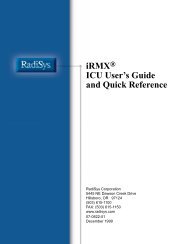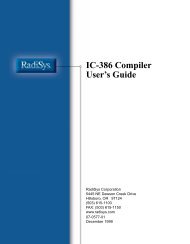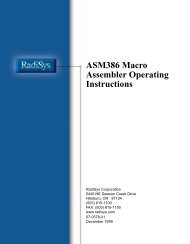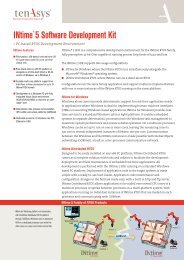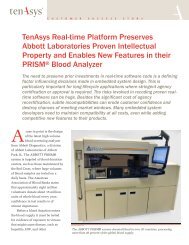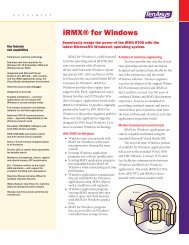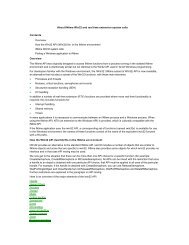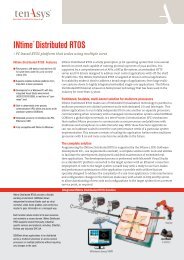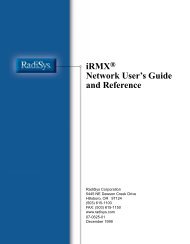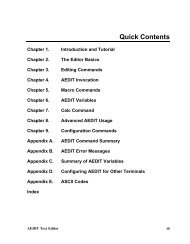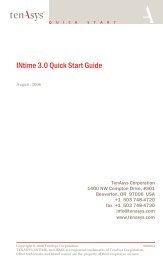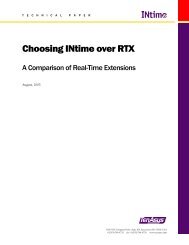INtime® 3.1 Software - tenAsys
INtime® 3.1 Software - tenAsys
INtime® 3.1 Software - tenAsys
Create successful ePaper yourself
Turn your PDF publications into a flip-book with our unique Google optimized e-Paper software.
INtime <strong>3.1</strong> <strong>Software</strong><br />
If a distinct thread drives each client, an efficient transaction system requires that<br />
threads share access to database data. When threads run concurrently, this situation<br />
ocasionally arises:<br />
Figure 4-6. Multithreading and mutual exclusion<br />
B<br />
<br />
<br />
A<br />
Thread A, the running thread, reads data from the database and performs computations based<br />
on the data.<br />
Thread B tries to preempt thread A and update the data while thread A works on it. Mutual<br />
exclusion, provided by a region, prevents two threads from accessing the same data concurrently.<br />
Unless thread B is prevented from modifying the data until after thread A has finished,<br />
thread A may unknowingly use some old data and some new data, resulting in an<br />
invalid computation. It should, however, read and compute the new data after thread B<br />
updates it.<br />
Memory pools and memory sharing<br />
Memory pools are the basis of INtime software’s memory management. Two types of<br />
memory pools exist:<br />
• Initial memory pool: All the memory available to the RT kernel (that is, free space<br />
memory). Managed by the RT kernel, the initial memory pool belongs to the root<br />
process and is allocated to INtime applications on request. Any amount of memory<br />
you allocate to the RT kernel is not available to Windows for that session. There is<br />
a practical maximum for the amount of memory allocated to INtime software. This<br />
value depends on the number and size of INtime applications that run on the<br />
RT kernel.<br />
• Process memory pools: A portion of the initial memory pool assigned to an INtime<br />
application process when that process is created. Each process memory pool has a<br />
minimum and a maximum size. Once the minimum memory is allocated to a<br />
process, that memory is not available to other processes. When you delete a<br />
process, its memory returns to the initial memory pool.<br />
As threads in a process create and delete objects, the process memory pool’s size<br />
increases and decreases as needed, provided minimum and maximum values<br />
are not yet encountered. This provides dynamic memory allocation of the<br />
memory pool.<br />
48



